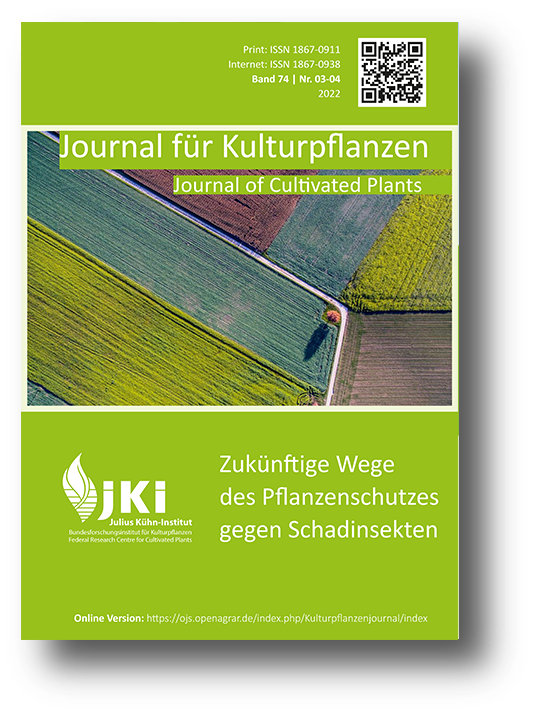Selected invasive pests in fruiticulture – overview of the current situation and ongoing research projects on spotted wing drosophila and stink bugs
DOI:
https://doi.org/10.5073/JfK.2022.03-04.04Keywords:
Biological control, insect nets, invasive pests, Spotted Wing Drosophila, Brown Marmorated Stink Bug, Southern Green Stink Bug, parasitoidsAbstract
Foreign invasive species have caused considerable economic damage in fruiticulture during the past decade. Consequently, commercial fruit production is facing major, new challenges. Reasons for the spread of those pest insects are manifold. Appropriate control measures for the containment of invasive species depend on several years of experience with diverse fruit cultures and in-depth-knowledge of the insects´ behaviour. For Spotted Wing Drosophila, first efficient mechanisms for the control of fruit infestation were identified and are in use. Moreover, broad knowledge of biology, ecology, and genetics of this species is available and can be applied for the development of further control strategies. Research on invasive stink bugs is currently undertaken at different locations. Effective means for their population regulation are developed in those research projects.
Downloads
Published
Issue
Section
License
Copyright (c) 2022 Astrid Eben, Christine Dieckhoff, Olaf Zimmermann, Bianca Boehnke, Heidrun Vogt, Annette Herz, Kirsten Köppler

This work is licensed under a Creative Commons Attribution 4.0 International License.
The content of the journal is licensed under the Creative Commons Attribution 4.0 License. Any user is free to share and adapt (remix, transform, build upon) the content as long as the original publication is attributed (authors, title, year, journal, issue, pages).
The copyright of the published work remains with the authors. The authors grant the Journal of Cultivated Plants, the Julius Kühn-Institut and the OpenAgrar repository the non-exclusive right to distribute and exploit the work.







